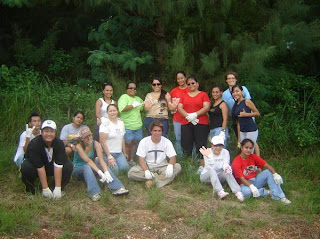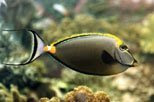Results Reporter
Out of 15 questions, you answered 15 correctly, for a final grade of 100%.
15 correct (100%)
0 incorrect (0%)
0 unanswered (0%)
Your Results:
The correct answer for each question is indicated by a .
1
CORRECT
Salmon may migrate into San Francisco Bay on an incoming tide. A tide table reads as follows: High 3:38 AM 5.1 feet; Low 9:01 AM, 1.7 feet; High 3:36 PM 6.2 feet; Low 10:05 PM 0.3 feet. When of these times would be the best time to go fishing?
A)
3:30 AM
B)
between 1 and 3 PM
C)
5 PM
D)
7 AM
2
CORRECT
Marine animals may not be adapted to as rapid changes in temperature as are land animals. This may be because
A)
ice floats.
B)
adding heat rapidly increases the speed of molecular motion.
C)
water has a high heat capacity.
D)
water boils at a relatively low temperature.
3
CORRECT
Some desert lakes have the same salinity as seawater, but cannot serve as homes for marine fishes in culture. Why might this be so?
A)
The amount of dissolved salts is not the same.
B)
The water is too hot.
C)
The oxygen concentration is too low.
D)
The ratio of ions in the total salinity is different from that in seawater.
4
CORRECT
A diver in northern California, where the water is murky, sees a brown sponge at 20 m (62 feet). On vacation in the tropical Caribbean, he sees the same sponge at an equal depth--but it appears to be bright red. What may be the explanation for this phenomenon?
A)
The murky water in California was less transparent, so red light was absorbed.
B)
More blue light penetrated in the Caribbean than in California.
C)
Cold water is less transparent than warm water.
D)
There is more sunlight at the surface in the Caribbean.
5
CORRECT
The most soluble oxygen is found in
A)
warm seawater.
B)
air at room temperature.
C)
polar seas.
D)
the surface water of the ocean.
6
CORRECT
Which of these animals probably could undergo vertical movement in the water with the least difficulty from changes in pressure?
A)
a fish with a swim bladder
B)
a seal
C)
a whale
D)
a deep-sea shrimp
7
CORRECT
In shelf waters, the main thermocline
A)
is at 1,500 m or deeper.
B)
separates the mixed layer from the deep layer.
C)
is a result of solar heating.
D)
may not exist.
8
CORRECT
Surface water sinks all the way to the bottom of the ocean
A)
at the Equator.
B)
where the slope is steep.
C)
in polar regions.
D)
off the Amazon and other large rivers.
9
CORRECT
The biggest ocean waves of all are just north of Antarctica. Why might this be so?
A)
Unlike the Arctic Ocean, the Southern Ocean has a land mass within it.
B)
The weather is the worst on Earth in Antarctica.
C)
Waves in the Southern Ocean can go around the world, and thus have the longest fetch.
D)
Cold seas have bigger waves than warm ones.
10
CORRECT
Salinity may not vary much from the surface to the depths far out at sea. If so, it would be easiest and least expensive to measure temperature versus depth with which devices?
A)
XBTs
B)
CTDs
C)
bottles with thermometers that "freeze"
D)
satellite data
11
CORRECT
A serious warning sign of an oncoming tsunami is
A)
an earthquake in the Pacific Ocean.
B)
water receding out to sea, exposing reefs and leaving fish out of the water.
C)
high waves in the open sea.
D)
very short wave lengths.
12
CORRECT
Which might occur soon after a scientist finds a reverse temperature/depth profile?
A)
overturn
B)
stratified water
C)
less oxygen in the surface water than usual
D)
surface water forming a lens on top of deeper water
13
CORRECT
An artist wants to paint a picture showing a coral reef, a 13 m (40 foot) long humpback whale and breaking surf. In which natural condition could this occur? (Hint: at what depth do waves break?)
A)
along a steep cliff with the reef just below the surface, where the wave breaks
B)
by a shallow reef, with the whale swimming above the reef and the wave breaking above the whale
C)
on a deep reef (30 m or so), with the wave breaking above the whale
D)
offshore, with seas breaking over the whale and the reef
14
CORRECT
Water is most dense
A)
at 4°C.
B)
at 3°C.
C)
in ice.
D)
when it freezes.
15
CORRECT
A water mass
A)
changes temperature and salinity as it sinks.
B)
changes temperature and salinity at the surface.
C)
circulates due to changes in density.
D)
always sinks all the way to the ocean floor.
 (http://hepsi.fan95.sitemynet.com/mynet_resimlerim/playful_baby_polar_bear.jpg)
(http://hepsi.fan95.sitemynet.com/mynet_resimlerim/playful_baby_polar_bear.jpg)
















 Dwarf-spotted grouper, Epinephelus merra
Dwarf-spotted grouper, Epinephelus merra










